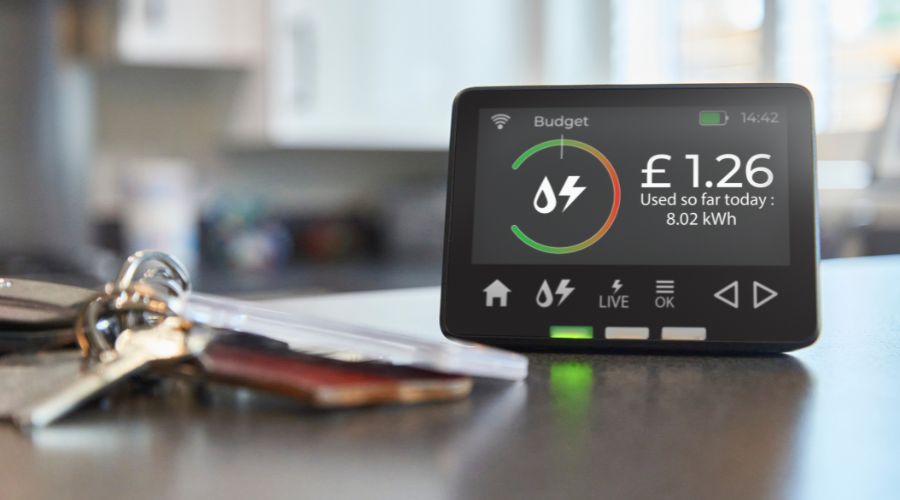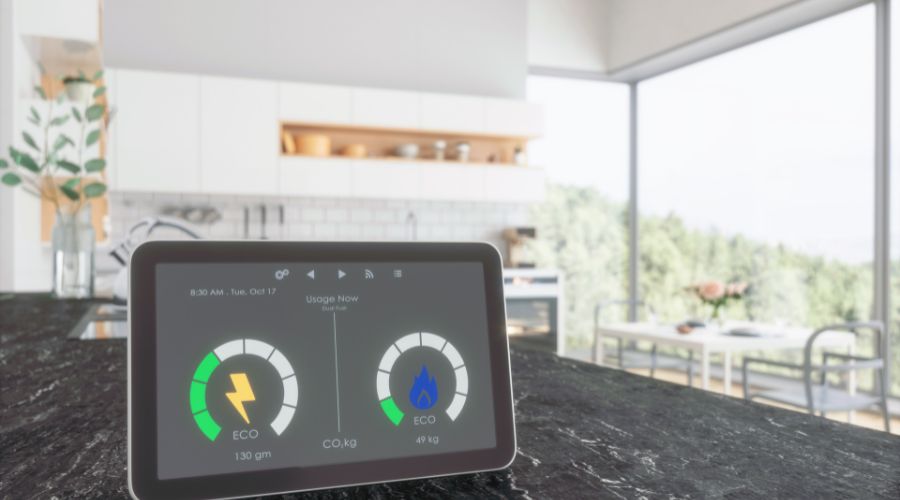With the use of a smart meter, it is possible to monitor energy use in real time by digitally measuring and recording a household’s energy use. Smart meters provide data on energy use to the energy supplier automatically, enabling more accurate billing and monitoring of energy use than typical analog meters, which require manual readings. Wireless technology is used by smart meters to connect to the energy provider, allowing the latter to remotely manage and monitor the flow of energy to homes.
Depending on the particular type and maker of the metre, the energy consumption of a smart metre in Australia may differ. Nevertheless, a smart metre typically uses relatively little energy and is unlikely to have a substantial influence on home energy usage. The average daily energy usage of a smart metre is projected to be roughly 0.1 kilowatt-hours (kWh) per day, citing research by the Australian Energy Market Commission. This translates to around 36.5 kWh annually.
By using smart meters, households are now able to better manage their energy consumption and make educated choices about when and how to use it. Smart meters can assist homes in identifying places where energy use can be reduced, resulting in advantages for the economy and the environment. Smart meters do this by delivering reliable data on energy consumption. In this context, this blog will examine the subject of energy consumption by smart meters, including their operation and the advantages they provide for households.
1. What Is The Technology Behind The Smart Meter?

A smart meter is a piece of electronic equipment that measures and records how much energy, gas, or water is consumed. It then transmits this data to the utility provider for billing and monitoring purposes. Smart meter technology is composed of many different kinds of parts, including:
Measurement Sensors: They have revolutionized the way we measure energy consumption. Smart meters, in particular, use advanced sensors that are far more accurate and precise than traditional meters. Unlike spinning disk meters, smart meters can measure energy consumption in real-time, providing more accurate billing and demand forecasting. Additionally, smart meters can even measure energy usage by individual appliances and devices, giving users a detailed breakdown of their consumption patterns.
Communication Module: It is a crucial component of smart meters, allowing them to transmit data on energy consumption to the utility company without the need for manual meter readings. This module can use different communication channels, including power line communication, radio frequency, or cellular networks. Additionally, the communication module enables the utility company to send messages to the smart meter, such as pricing signals during peak demand periods. With this technology, smart meters can help improve energy efficiency and reduce costs for both consumers and utility companies.
Data Management Software: It plays a crucial role in the processing and analysis of energy consumption data collected by smart meters. This software is installed on servers at the utility company and provides detailed insights into energy usage patterns. By detecting anomalies in energy consumption, such as sudden spikes or drops, the software can help identify network faults or malfunctioning appliances. Additionally, the software can analyze consumption patterns to identify potential energy savings opportunities and areas where energy efficiency improvements can be made. Overall, data management software is essential for utilities to better understand energy usage and demand, and to optimize their operations accordingly.
Consumer Displays: Consumer displays, such as in-home displays (IHDs), are becoming increasingly common with smart meters. These displays provide real-time information on energy consumption and costs, allowing consumers to better understand their usage and take steps to reduce it. By monitoring their energy usage through the IHD, consumers can identify areas where they may be using more energy than necessary and make changes, such as turning off appliances when not in use or adjusting their thermostat, to reduce their energy consumption and save money on their bills.
Back-End Analytics: Back-end analytics refers to the use of advanced data analysis tools by utility companies to optimize their energy networks. By analyzing data from smart meters, utility companies can identify patterns and forecast demand, allowing them to make informed decisions about how to manage their network. For example, if there is a sudden spike in energy consumption, the utility company can quickly investigate the cause and take steps to mitigate the impact, such as by increasing supply or incentivizing consumers to reduce their energy usage. This helps the utility company to better understand energy usage patterns and forecast future demand, ultimately leading to more efficient and effective energy management.
2. Benefits of Using a Smart Meter

Some benefits of using a smart meter are mentioned below:
Accurate Billing: It is essential for both consumers and utility companies. Smart meters have revolutionized the way energy consumption is measured and billed. Unlike traditional meters, which rely on estimated readings, smart meters provide real-time data, ensuring accurate and timely billing. This eliminates the risk of overcharging or undercharging consumers. Additionally, the objective data collected by smart meters help to prevent billing disputes between consumers and utility companies. With smart meters, everyone can be confident that they are paying for the energy they actually use.
Reduced Energy Costs: By providing real-time data on energy consumption, smart meters can help consumers reduce their energy costs. With this information, consumers can identify energy-wasting appliances and take steps to reduce their energy usage. Additionally, smart meters can help consumers better understand their energy usage patterns, enabling them to make more informed decisions about when and how to use energy. For example, if a consumer notices that their energy usage is higher than usual during peak demand periods, they can shift their usage to off-peak periods when energy is cheaper, ultimately saving them money on their energy bills.
Improved Energy Efficiency: Smart meters have revolutionized the way we consume energy by providing real-time data on energy consumption. This data helps consumers identify areas where they can improve their energy efficiency and reduce their carbon footprint. For instance, by analyzing the data, consumers can identify appliances that are using more energy than they need to and replace them with more energy-efficient models. Additionally, smart meters can help consumers shift their energy usage to off-peak periods when energy is cheaper, thereby reducing their energy bills. Overall, smart meters are a powerful tool for improving energy efficiency and promoting sustainable living.
Better Demand Forecasting: With the implementation of smart meters, utility companies are able to gather more precise data on energy consumption patterns. This data allows for more accurate forecasting of energy demand, which in turn enables utility companies to better manage their energy networks and ensure a sufficient energy supply to meet demand. By reducing the risk of power outages and other disruptions to the energy network, better demand forecasting can ultimately lead to a more reliable and efficient energy system.
Faster Fault Detection: With the help of smart meters, utility companies can now detect faults in their energy network at a much faster rate. These meters are equipped with advanced technology that can detect sudden spikes in energy consumption, which could indicate a fault in the network or a malfunctioning appliance. By detecting these faults early on, utility companies can take immediate action to minimize the impact on consumers and restore service more quickly. This not only helps to improve customer satisfaction but also reduces the cost of repairs and maintenance on the energy network.
Reduced Carbon Footprint: Reducing your carbon footprint is important for the environment, and smart meters can help. By tracking your energy usage, you can identify areas where you can be more efficient and reduce your overall consumption. This not only saves you money on your energy bills, but it also helps to reduce the number of carbon emissions associated with energy production. Additionally, smart meters provide valuable data to utility companies, allowing them to shift towards renewable energy sources like wind and solar. So, by using a smart meter, you can make a positive impact on the environment and help to create a more sustainable future.
3. How to Read Your Smart Meter?

You can keep track of your energy usage and make sure you are being charged correctly for your usage by reading a smart meter, which is a straightforward operation. To read your smart meter, you must find it and get to the display screen. A smart meter’s display screen may also provide other information, such as the time and date, in addition to displaying your energy usage in kilowatt-hours (kWh).
Start by looking at the display screen on your smart meter. Your current energy usage should be shown by a number that is displayed in kWh. There may be a decimal point, then more numbers that represent fractions of a kWh, after this amount. When the number 12.345 kWh is displayed on the screen, for instance, it means that 12 kilowatt-hours and 345 watt-hours of energy were used.
Your smart meter can be used to monitor the evolution of your energy use. Check the display screen several times throughout the day, then record the readings. Then you can compare these numbers to discover when you use the most energy and pinpoint places where you can cut back on your energy use. It’s important to keep in mind that various smart meter types may have somewhat different display displays or features. You can ask your utility company for help or refer to the user manual that comes with the meter if you are unsure how to read your smart meter.
4. Energy Saving Tips Using a Smart Meter

Smart meters can give real-time data on your energy usage, enabling you to identify areas where you can save energy and lower your energy costs. Here are some energy-saving tips for utilizing a smart meter:
Monitor Your Energy Usage: With a smart meter installed in your home, you have access to real-time data on your energy usage. By regularly checking the display screen on your smart meter, you can monitor your energy consumption and identify areas where you can make adjustments to reduce your usage. For instance, if you notice that you are using more energy during certain times of the day, you can modify your energy consumption habits to reduce usage during those periods and save on your energy bills. So, monitor your energy usage with your smart meter and take control of your energy consumption!
Identify Energy-Wasting Appliances: By using your smart meter, you can easily identify which appliances in your home are wasting energy. Simply check the display screen on your smart meter to see how much energy each appliance is using and compare it to the manufacturer’s specifications. If an appliance is using more energy than it should, it may be time to consider replacing it with a more energy-efficient model. Additionally, unplugging appliances when they are not in use, such as chargers and small appliances, can also help save energy and reduce your overall energy consumption.
Adjust Your Energy Consumption: Reducing your energy consumption starts with identifying areas where you can make changes. Once you’ve done that, it’s time to adjust your habits. For instance, you might be able to shift your energy usage to off-peak periods when energy is less expensive. You can also adjust the settings on your appliances to reduce energy consumption, turn off lights when you leave a room, use natural light instead of artificial light, and adjust the temperature on your thermostat to save energy. These small changes can add up to significant savings on your energy bill.
Use Energy-Saving Features: To save on energy consumption, take advantage of the energy-saving features on your appliances. These features are designed to help you reduce your energy usage without sacrificing performance. For instance, you can opt for the eco mode on your dishwasher, use the energy-saving settings on your computer, and choose cold water for your washing machine. By using these features, you can lower your energy bills while still enjoying the same level of comfort and convenience.
Consider Renewable Energy: In today’s world, it’s important to be mindful of our impact on the environment. One way to do this is by considering renewable energy sources like solar or wind power. By using a smart meter, you can track your energy usage patterns and determine if renewable energy is a feasible option for your household. Additionally, if you have solar panels or other renewable energy systems installed, your smart meter can help you monitor your energy production. Let’s all contribute to lowering our carbon footprint and preserving the environment for future generations.
Conclusion
Smart meters are an important tool for managing energy usage and reducing energy bills. By providing real-time data on energy usage, smart meters allow homeowners to identify areas where they can save energy and adjust their consumption habits accordingly. The benefits of using a smart meter include more accurate billing, the ability to monitor energy usage in real-time, and the potential to reduce energy bills and carbon emissions. By following energy-saving tips, such as monitoring energy usage, identifying energy-wasting appliances, adjusting energy consumption, using energy-saving features, and considering renewable energy, homeowners can take advantage of the benefits of smart meters to save money and reduce their environmental impact. Overall, smart meters are an essential part of the transition to a more sustainable and energy-efficient future.

